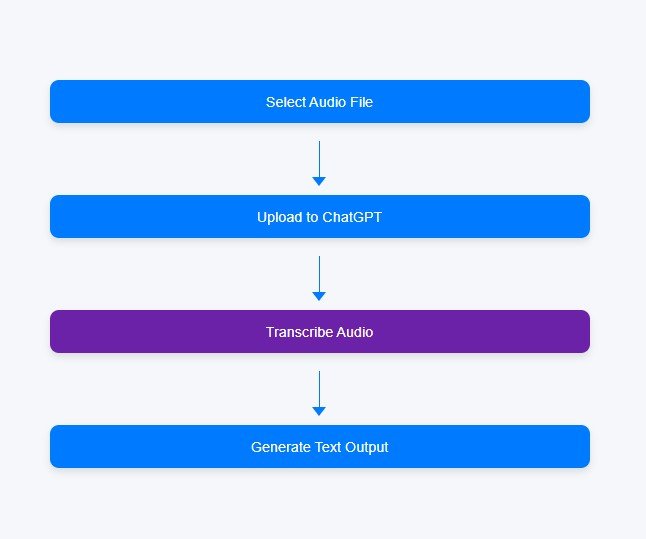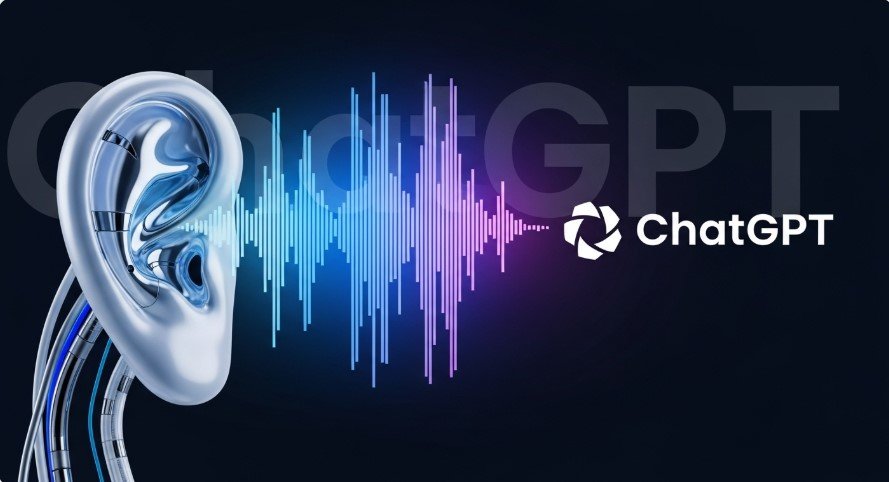ChatGPT, developed by OpenAI, is a powerful AI tool known for its text-based capabilities. But can it listen to audio files? As of 2025, the answer is yes, with some limitations. Thanks to advancements in its multimodal GPT-4o model, ChatGPT can process audio files, making it useful for tasks like transcription and voice interaction. This article covers how ChatGPT handles audio, its features, limitations, and practical uses for students, professionals, and creatives.
What Are ChatGPT’s Audio Capabilities?
ChatGPT was initially designed for text-based tasks, excelling at answering questions and generating content. With the release of the GPT-4o model in May 2024, it gained multimodal abilities, allowing it to process audio, images, and text. This upgrade enables ChatGPT to “listen” to audio files and perform tasks like transcription and voice conversations.
Key Audio Features
- Audio Transcription: ChatGPT can convert audio files (e.g., MP3, WAV) into text.
- Voice Interaction: Users can speak to ChatGPT, and it responds with natural-sounding audio.
- Audio Analysis: It can summarize or analyze transcribed audio content.
These features are primarily available to paid users (ChatGPT Plus, Pro, or Team), with limited access for free users through previews.
How to Use ChatGPT with Audio Files
Before GPT-4o, users had to transcribe audio using tools like OpenAI’s Whisper API and then feed the text to ChatGPT. Now, ChatGPT can process audio files directly, simplifying workflows. Here’s how it works.
Supported Audio Tasks
- Transcription: Upload an audio file to get a text transcript.
- Summarization: Generate summaries of audio content, like meeting notes or podcast key points.
- Translation: Transcribe and translate audio into another language.
- Content Creation: Turn transcribed audio into blog posts, scripts, or social media content.
How to Process Audio with ChatGPT
- Subscribe to a Paid Plan: Access advanced audio features with ChatGPT Plus, Pro, or Team.
- Use Voice Mode: On the mobile or desktop app, tap the headphone icon to start a voice conversation.
- Upload Audio Files: Use the file upload feature to add MP3, WAV, or M4A files (up to 25MB).
- Analyze or Summarize: Ask ChatGPT to transcribe, summarize, or analyze the audio content.

Example Use Case
A student uploads a lecture recording to ChatGPT. The AI transcribes it and generates a summary of key points, saving hours of note-taking. Similarly, a podcaster can upload an episode, get a transcript, and ask ChatGPT to create a blog post from it.
Limitations of ChatGPT’s Audio Processing
While ChatGPT’s audio capabilities are impressive, they have limitations:
- Audio Quality: Transcription accuracy depends on clear audio. Background noise or heavy accents can lead to errors.
- File Size Limit: Audio files are capped at 25MB, which may require compression for longer recordings.
- No Live Audio: ChatGPT cannot process live audio streams, only pre-recorded files.
- Paid Access: Advanced audio features are mostly limited to paid plans.
Future updates may address these issues, potentially adding live audio processing or improved accuracy for complex audio.
Complementary Tools for Audio Processing
To enhance ChatGPT’s audio capabilities, consider these tools:
- Musicfy: Converts text into music or clones voices for creative projects. Visit Musicfy
- Descript: Edits audio and video, ideal for podcasters and content creators. Explore Descript
- Whisper API: OpenAI’s speech-to-text tool for accurate transcription. Learn more
Comparison of Tools
| Tool | Key Feature | Best For | How It Works with ChatGPT |
|---|---|---|---|
| Musicfy | Text-to-music, voice cloning | Music creation | Generate lyrics with ChatGPT, then create music |
| Descript | Audio/video editing, transcription | Podcasting, video production | Transcribe with Descript, analyze with ChatGPT |
| Whisper API | Speech-to-text transcription | Accurate transcription | Transcribe audio, then use ChatGPT to process text |
Practical Applications of ChatGPT’s Audio Features
ChatGPT’s audio capabilities are useful across industries:
- Education: Transcribe lectures or create study guides from audio.
- Content Creation: Turn podcast episodes into blog posts or social media snippets.
- Business: Summarize meeting recordings or generate action items.
- Creative Projects: Generate song lyrics and pair with tools like Musicfy for music production.
Visit more:
- Can ChatGPT transcribe audio?
- How to use ChatGPT for UX research
- ChatGPT vs. traditional search engines
Conclusion
ChatGPT’s ability to process audio files, introduced with the GPT-4o model, makes it a versatile tool for transcription, voice interaction, and content creation. While limited by audio quality, file size, and paid access, it offers significant value for students, professionals, and creatives. Pairing ChatGPT with tools like Musicfy or Descript can unlock even more potential. As OpenAI continues to improve its models, expect even better audio processing in the future.
FAQs
- Can free ChatGPT process audio files?
Free users have limited access to audio features. Paid plans offer full transcription and voice capabilities. - How accurate is ChatGPT’s transcription?
It’s accurate for clear audio but struggles with noise or accents. Proofreading is recommended. - Can ChatGPT handle live audio?
No, it only processes pre-recorded audio files, not live streams. - What file formats does ChatGPT support?
It supports MP3, WAV, M4A, and more, up to 25MB. - How can I improve transcription results?
Use high-quality audio, reduce background noise, and consider tools like Whisper API for better accuracy.
